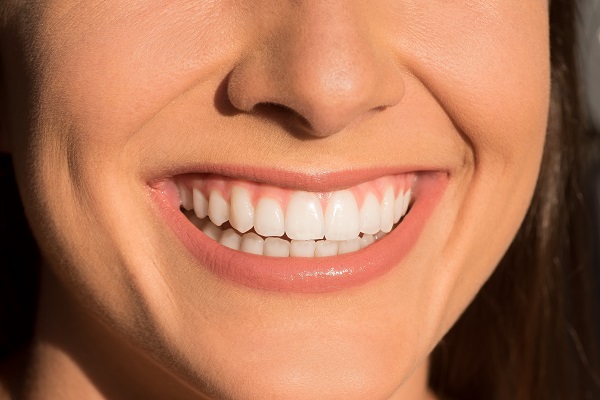How a Cosmetic Dentist Treats Gum Disease

Gum disease can significantly alter the smile's appearance, but cosmetic dentistry can provide solutions to address the disease and potential destruction it has left behind. Periodontitis is a serious infection of the gums that can result in tooth loss and damage to the jawbone if left untreated. While preventable through good oral hygiene, it can also be treated professionally.
Recognize the signs
Considered one of the more common oral health concerns among adults, the first sign of periodontitis is swollen or tender gums that bleed during brushing. Though gingivitis has similar symptoms, gum disease becomes a more serious health concern over time, as the inner layer of bone and gum will pull away from the teeth and create small pockets. These spaces can become infected and cause the body’s natural immune response to try and stop or slow the spread of bacteria below the gums. As this fight occurs, it can break down the connective tissue that holds the teeth in place and lead to tooth loss.
Understand treatment options
Professional dental help can treat this condition, and the sooner the disease is noticed, the easier it can be to address. Cosmetic dentists can help effectively manage the disease and work with a patient to restore or replace any teeth that were lost or damaged from periodontal disease.
Professional cleaning
Having teeth professionally cleaned at least twice a year is preventative in the fight against periodontitis. A thorough cleaning is an opportunity to have tartar and plaque buildup from both above and below the gumline removed before it becomes a concern. Noticeable signs of periodontal disease can also trigger additional treatment recommendations.
Bone or tissue grafts
The longer the disease is left untreated, the more severe the damage that can occur. If the gums have started to recede or tooth loss has occurred, bone or soft-tissue grafts may be needed. In bone grafting, the socket or ridge can be preserved to minimize surrounding bone collapse. It can prevent additional shrinkage and provide a more sturdy base for tooth replacement, whether from an implant or bridge. A soft-tissue graft works to prevent additional gum recession, cover visible tooth roots, and help preserve the tooth roots from further decay.
Scaling and root planing
In some cases, an individual can have buildups of plaque and tartar removed through scaling and planing. This is a deep cleaning into the pockets below the gumline, though all areas of buildup are addressed during the treatment. Once the pockets have been cleaned, the roots of the teeth will be smoothed out to encourage the gums to reattach to the teeth.
Restorative treatment
Following a treatment that addresses the disease itself, cosmetic dentistry services can often provide restorative treatments. Where tooth loss has occurred or where decay is noticeable, dental implants or other appearance-oriented solutions may be recommended.
Conclusion
It is much easier to prevent gum disease than to treat it. If you experience discomfort or have severe issues with your gums, schedule an appointment with a dental provider.
Request an appointment here: https://www.highlandsdentaldallas.com or call Highlands Family Dentistry at (214) 491-5362 for an appointment in our Dallas office.
Check out what others are saying about our dental services on Yelp: Gum Disease in Dallas, TX.
Related Posts
The CDC states that gum disease, also known as periodontal disease, is one of the leading oral infections in the United States. In addition, the National Institute of Health cites it as the most common culprit for adults losing teeth. Because the early stages of periodontal disease often do not have noticeable symptoms, many patients…
Gum disease is a serious condition that can result in a need for periodontal treatment. Treatment is needed in order to destroy the infection and prevent it from getting worse. Oftentimes, without treatment, a case of gum disease can become advanced, which can result in tooth loss, receding gums, and even jaw deterioration, all of…
Gum disease is a bacterial infection that causes inflammation in the gums and bone surrounding the teeth. The resulting inflammation causes bone loss and eventually, tooth loss, and it can contribute to other health problems. Once a patient has been diagnosed with gum disease (periodontal disease), prompt treatment is necessary to address the condition. Most…
Your general dentist can help you achieve optimal dental health. Routine dental checks can even improve the way you care for your teeth. Busy schedules tend to prevent you from keeping your dental appointments. Making time for dental checks can help your teeth in many ways. If you want to know how routine dental visits…
